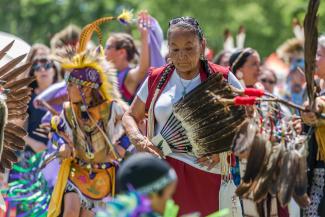
Hadih, Dene Za Tsekey Za. Greetings, my respected relatives; greetings, my respected friends. Paul Lacerte Sadnee. My Name is Paul Lacerte. Gilam Giloh Sadnee. My traditional name is Gilam Giloh. Si gunna Luksil Yoo Injan Yinka Dene Keyoh. I am a member of the Cariboo Clan and a citizen of the Carrier First Nation/Indigenous territory in what is now known as northern British Columbia, Canada. I am an intergenerational survivor of the “Indian Residential Schools” in Canada and my late first wife was also a survivor of the same residential school system. The church-run residential school in our Carrier First Nation territory closed in 1984. Indigenous Peoples around the world have had similar experiences and have been subjected to similar colonial policies which were designed to displace and disrupt our societies and our economies. But those efforts have failed and Indigenous social and economic systems are being revitalized. We are pivoting from surviving to thriving, from dependence to independence. We are building a better future; a future in which the beauty and brilliance of our Peoples and our cultures can and will lead the way to a better world for all of us.

Paul Lacerte, managing partner at Raven. Photo courtesy of Raven Indigenous Capital Partners.
The emergent concept of Indigenomics and the story of Raven Indigenous Capital Partners is one of strength and resurgence. It is a story of resiliency and revitalization. Carol Anne Hilton is the founder and CEO of the Indigenomics Institute. She is an Indigenous woman of Nuu chah nulth descent and a proud member of the Hesquiaht First Nation on Vancouver Island, British Columbia. She has been an independent member of the investment committee of the Raven Indigenous Impact Fund LP since its inception in May 2019; and Raven Indigenous Capital Partners was named to the Indigenomics Institute’s inaugural “Ten to Watch” list in December 2019. It is an honor to share our stories with you, and we are deeply grateful for this opportunity.
______________________________________
An Introduction to Indigenomics
By Carol Anne Hilton
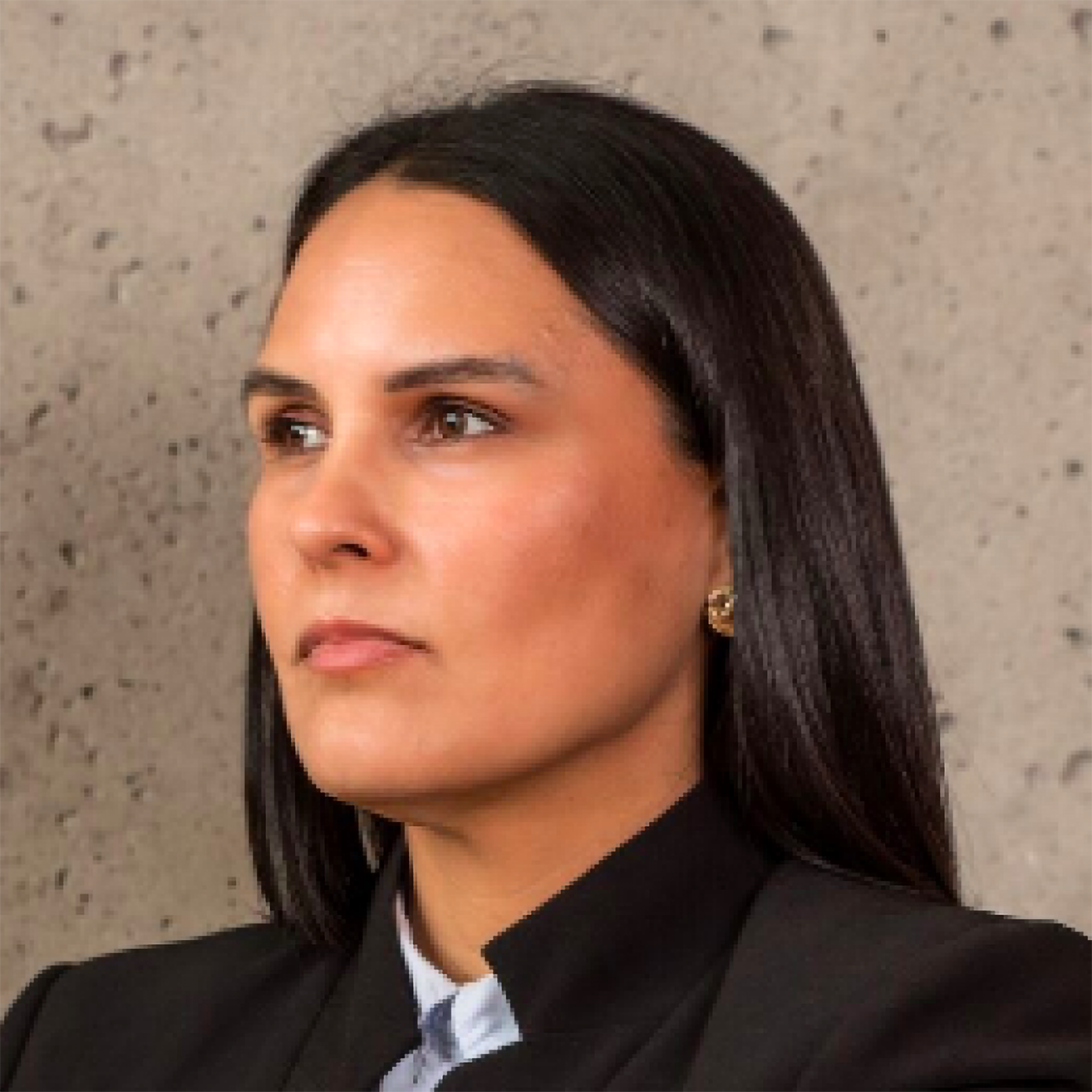
Carol Anne Hilton, founder of Indigenomics Institute. Photo courtesy of Indigenomics Institute.
Indigenomics honors the powerful thinking of Indigenous wisdom of local economy, relationships, and human values. It is about increasing the role and visibility of Indigenous peoples in the new economy and understanding Indigenous ways of being and worldview. By drawing on ancient principles that have supported Indigenous economies for thousands of years and working to implement them as modern practices, Indigenomics welcomes you to an Indigenous worldview. It brings to the forefront human values and practice. It explores the pathway of the threshold of the Indigenous relationship and modern economies by inviting dialogue and thought-provoking insight into possibilities of the Indigenous relationship in Canada and beyond.
We are living in a time of Indigenous economic resurgence. Our traditional economic knowledge systems have been rendered almost invisible through over 500 years of colonization and systemic racism. Through the upheaval of Indigenous economies and ways of being over time, Indigenous Peoples have gone through four economic stages:
1. Disruption: This stage is characterized by the systemic disruption of existing Indigenous economic systems, ways of being, and removal from the land while severing inherent authority and responsibility to place. This stage required the dehumanizing of Indigeneity through instruments such as the Doctrine of Discovery, the Indian Act of 1876, and other legal and statutory approaches around the world.
2. Entanglement: The second stage is characterized by the complexity of the entanglement of the Indigenous relationship locally, nationally, and internationally. This is firmly embedded within the conflict stemming from the disruption of Indigenous ways of being (our epistemologies) and the threat to our continued way of life.
3. Emergence: The third stage is characterized by the emergence of the Indigenous legal environment. This legal context serves to reinforce new modern economic space for Indigenous nations, businesses, and governments.
4. Empowerment: This fourth stage is characterized by the rise of Indigenous economic empowerment as an effect of the shifting Indigenous rights and title legal environment, economic equality, and inclusion. This stage sees an increase in Indigenous business development and economic activity as a viable and competitive business model.
Indigenomics is a collective response to the violent removal of Indigenous economic worldview and the systemic exclusion of Indigenous Peoples from the mainstream economies that we know and experience today. It is a system that reminds us that the intention of our Indigenous economies is to foster our well being, to live in ecological balance and prosperity, and to transfer Indigenous concepts of balance, wealth, and generosity across generations. For the first time ever, economics from an Indigenous worldview is being reclaimed within the modern economic space—the narrative of growing Indigenous business success is expected to skyrocket over the next decade. A new multibillion dollar agenda is on the horizon, and the First Peoples of these lands are the drivers of new partnerships, investment, and long term growth.
Today, through a shift in legal influence, Indigenous Peoples own masses of land and entitlements through treaties and rights and title, and occupy space in all areas of business, industry, and the private sector. This will impact and inform important public policy and evolve Indigenous governance structures. With this growth, Indigenous Peoples are increasingly leaving their economic footprint on today’s national and international economic landscape.

In 2018, I founded the Indigenomics Institute, an Indigenous economic advisory for public governments, Indigenous communities, and the private sector. The Institute works with Nations, organizations, governments, and private industry to strengthen Indigenous economic capacity. Its mission is to facilitate positive leadership and relationships to support the growth and development of Indigenous economies, with a focus on four core areas in overcoming Indigenous economic barriers and addressing challenges: dialogue platform for Indigenous economic solutions; economic policy, research, analysis, and planning; education and training; and partnership development. The Indigenomics Institute is converging ideas, resources, tools, and people to grow the Indigenous economy, and is unleashing a national Indigenous economic agenda to facilitate the growth of the Indigenous economy from its current value of $32 billion to $100 billion CAD in the next 5 years.
__________________________________________________________

Raven Indigenous Capital Partners
In many ways, Raven Indigenous Capital Partners (Raven) is an expression of Indigenomics. Raven was founded in 2018 with three interrelated objectives: to address the equity gap for innovative, scalable Indigenous enterprises; to decolonize the investment process and provide cultural safety to Indigenous entrepreneurs; and to build investment platforms that would enable allies to participate in building a vibrant reconciliation economy. As founders, we believed that investing in purpose-driven Indigenous enterprises would create a positive impact in their communities while also providing competitive financial returns. We chose the Raven as our symbol, as it is central to rebirth and transformation in many Indigenous cultures.
Our founding partnership is also an expression of reconciliation and the power and potential of Indigenous and non-Indigenous Peoples working together to support and enable the Indigenous economy. By design, we chose to create a strength-based model that included myself, a First Nations partner, and a Métis partner, Jeff Cyr. Both of us have deep experience working with and for Indigenous communities and in the Indigenous innovation space. A third, non-Indigenous, partner, Stephen Nairne, has extensive experience in impact investing. Our partnership was inspired by the momentum generated by the Canadian Truth and Reconciliation Commission’s 94 Calls to Action and our commitment to each other. Our mission was our response to those Calls to Action. It was also a response to a clearly identified gap in the Canadian Indigenous economic landscape: the absence of patient, flexible capital for Indigenous entrepreneurs provided in a culturally safe and supportive way.
As an Indigenous financial intermediary, we anchored our design and investment approach in the Indigenous worldview that all things are related, connected, and respected. Every being has a purpose and place within the sacred circle. We committed that all our work would honor the Seven Natural Laws of love, respect, courage, honesty, wisdom, humility, and truth. We established early on that all of our investments would work for the well being of both people and the planet, while acknowledging the fund’s responsibility to both our investors and to the next seven generations. Our activities are guided by five foundational principles:
• Anchored in the Indigenous Peoples of Canada the First Nations, Métis, and Inuit Peoples
• Guided by Indigenous cultures
• Centered on Indigenous families, communities, and territories
• Built on respectful and trusting relationships
• Ensuring cultural safety for all Indigenous Peoples
Within our first two years as a firm, we began to raise our first Indigenous owned Impact Fund—the first in the world—with an initial target raise of $5 million CAD. The momentum that inspired our partnership also fueled the appetite of investors who were looking for ways to vote with their dollars toward economic reconciliation while realizing a return on their investment. As more and more investors completed their due diligence processes and signaled that the Firm and the space was safe to invest in, we began to experience a shift in the investor ecosystem and the Indigenous landscape. The opportunity began to spread by word of mouth among investors looking for blended returns and Indigenous entrepreneurs looking for patient, flexible, culturally safe capital. The net result of this shift was that the size of our Fund—the Raven Indigenous Impact Fund—grew to $20 million CAD.
Raven in Action
Our first investment was in Animikii Inc. (www.animikii.com), an award-winning, Indigenous-owned digital agency based in Victoria, BC, that uses technology to drive positive change for Indigenous Peoples. It was founded in 2003 by Jeff Ward (Ojibwe and Métis), a web designer and software developer who also served as CEO. Animikii developed technology for leading Indigenous-focused organizations from all industries. Our investment enabled Animikii to complete two acquisitions and transition from a services business to a products service, including the launch in 2021 of Niiwin, a data sovereignty application for Indigenous communities.
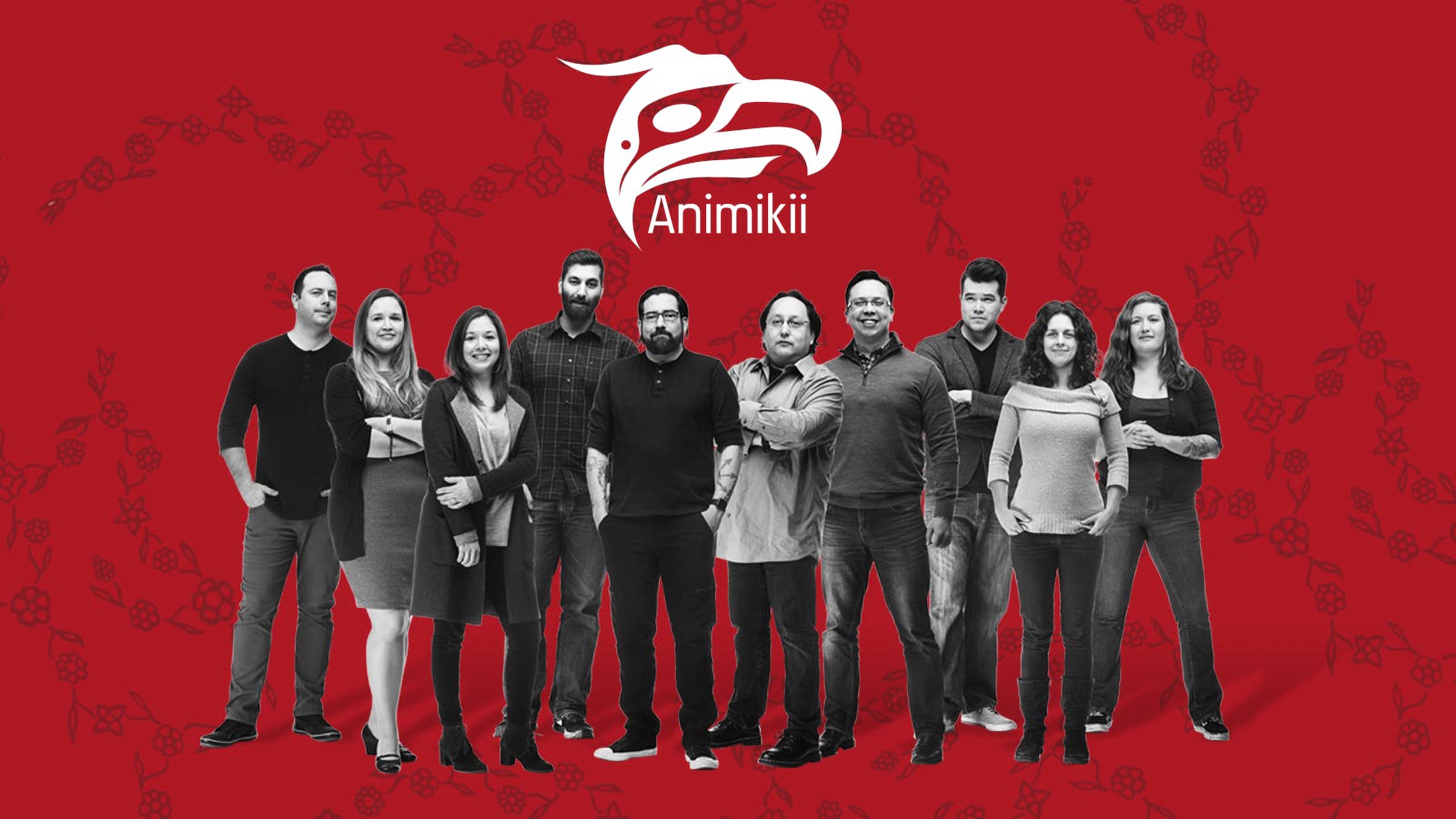
Animikii Inc. is an award-winning, Indigenous-owned digital agency based in Victoria, BC. Image courtesy of Animikii.
Since Raven’s investment, Animikii’s revenues have nearly doubled and the team has grown from 8 to more than 20 full time employees and 10 contractors. This investment enabled Animikii to increase its revenues by 35 percent year over year, notwithstanding the economic impacts of COVID-19; develop a new Indigenous data sovereignty product and a new web development product; and increase its Indigenous employee base by over 50 percent. Raven joined the Board of Directors for Animikii and provides ongoing operational, strategic, and cultural support and advice.
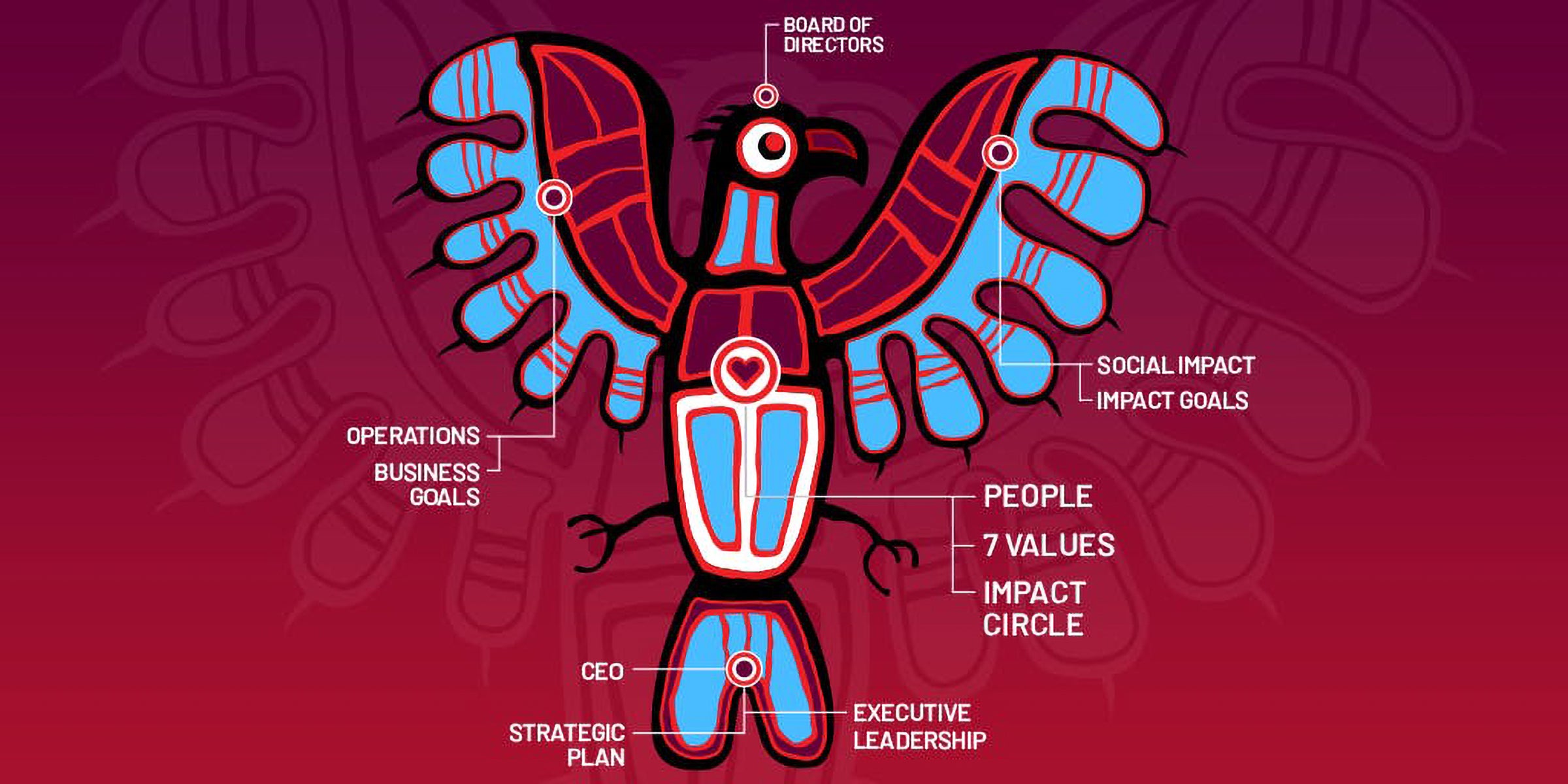
Animikii's operating principles are deeply rooted in Indigenous values and worldviews. Image courtesy of Animikii.
Since 2019, we have invested more than $4 million CAD into 6 Indigenous enterprises. In 2019, Raven announced an investment of $350,000 CAD into Cheekbone Beauty Cosmetics, a leading Indigenous natural cosmetics company headquartered in St. Catharines, Ontario. Founded by marketing professional Jenn Harper (Anishinaabe) in 2016, the company launched its branded product line using a sophisticated brand ambassador social media strategy and now ships lipsticks, glosses, contour kits, and brow products across Canada, the United States, and Australia. Cheekbone embeds a deep social mission in its business model, donating 10 percent of profits to the First Nations Child and Family Caring Society. Prior to this investment, Harper had bootstrapped Cheekbone Beauty while raising a family and working full time. “There is nothing more empowering than someone believing in the vision of your brand as much as you do. It is life changing. I’m really looking forward to our new relationship with Raven Capital so that I can scale Cheekbone Beauty Cosmetics with confidence. This is a product with a mission,” said Harper.
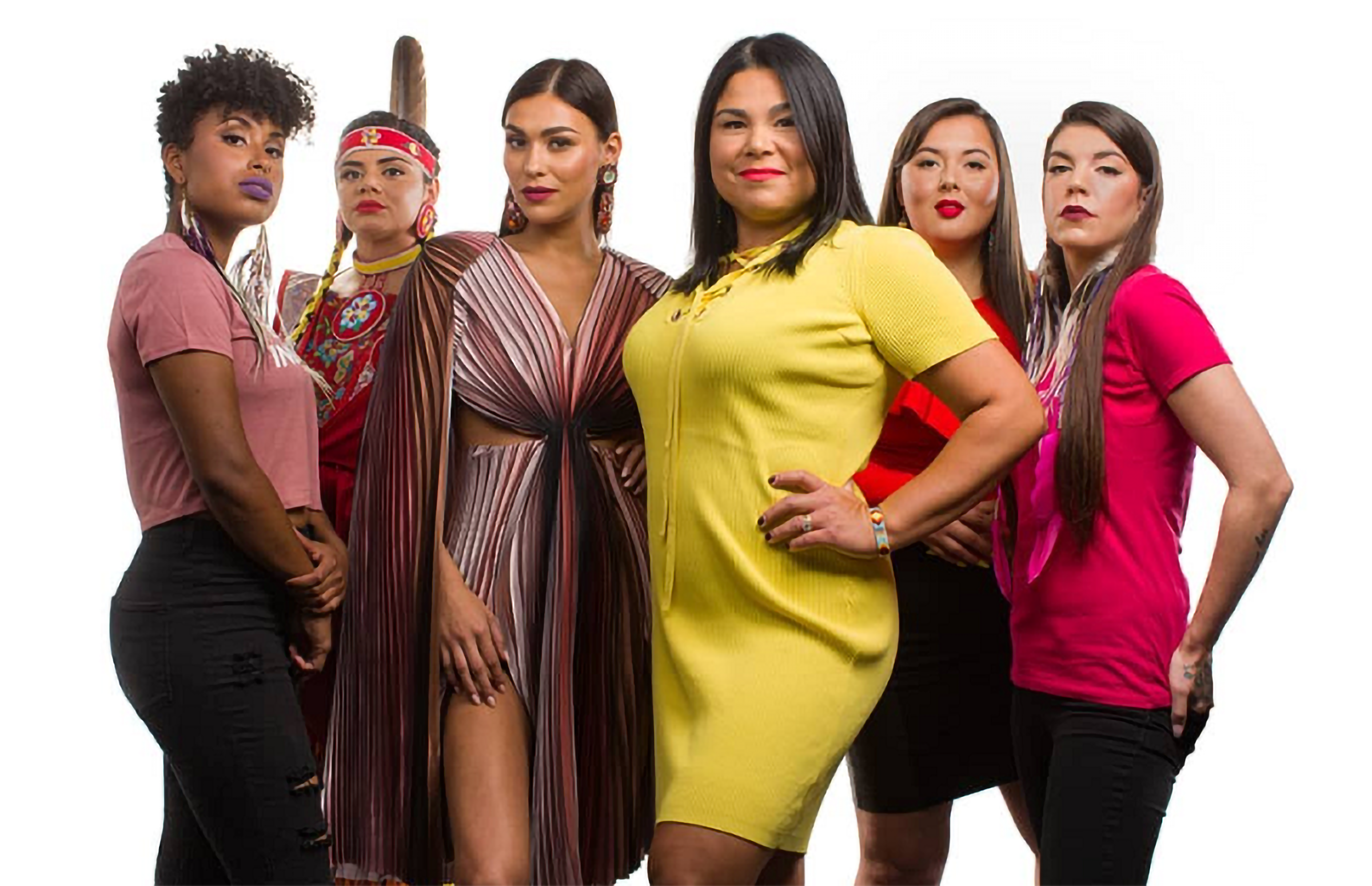
The women of Cheekbone Beauty Cosmetics, a leading Indigenous natural cosmetics company based
in St. Catharines, Ontario, Canada. Photo courtesy of Raven Indigenous Capital Partners.
The beauty industry has experienced explosive growth over the past five years and continues to outpace broader economic trends. Half of that growth has come from online sales, which has been the basis of Cheekbone Beauty since its inception. This is part of a generational shift to organic, locally made, artisanal brands that have a compelling, mission-aligned narrative for young consumers. “Cheekbone Beauty is a real time demonstration of Indigenomics in action. Combining purpose, meaning and Indigenous resilience—this company is going places. Indigenous entrepreneurial success bolstered by the entrance of Indigenous-controlled capital in the market through Raven Capital is how success will be built in our communities,” said Hilton.
This past July, Raven announced an investment of $250,000 CAD in the Social Awareness Group, a technology company headquartered in Edmonton, Alberta. Co-founded by Aaron Lambie, Kris Vanderburg, Joseph Duperreault, and Jacquelyn Cardinal in 2019, the company is brought together by a shared belief that through small shifts, society can create positive changes in the relationships between Indigenous communities and non-Indigenous society. Motivated by their vision of “Indigenous Prosperity Globally,” their flagship web-based product, Nisto Link, is an evolution of socioeconomic supply chain and hiring efforts to the industrial marketplace. For companies who have Indigenous prosperity as part of their current and future road map, Nisto Link plays a central role in illustrating objective data that connects corporate policy to actual results. “So much of our political and economic discussions assume that success is a zero-sum game, and that’s just not true. The work we do is our response to recognizing that we all have an obligation to ensure that Indigenous communities aren’t forgotten as the world continues to change around us. The impacts of COVID-19 on our economies only makes this call to action more urgent,” said Lambie, CEO, at the Social Awareness Group.

Looking ahead
Like a traditional braid of Sweet Grass, we are weaving together the theory of Indigenomics, Raven Capital’s innovative Indigenous approaches to social finance, and the brilliance of Indigenous entrepreneurs. By facilitating the flow of capital towards solutions in Indigenous spaces and by decolonizing our processes and our relationships, we are building a better and brighter future than the past that we have had. We are building thriving Indigenous economies in the images of our cultures. This is a form of “good medicine,” and it is an important part of the next chapters of our stories as Indigenous Peoples. Teh Beh Mussi Cho. Thank you for the opportunity to share our medicine with you.
Top photo: 2017 Ottawa Summer Solstice Indigenous Festival at Vincent Massey Park. Photo by Bing Wen.
